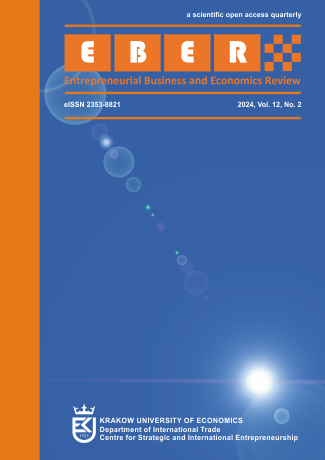Micro-firms’ productivity growth in Poland before and during COVID-19: Do industry and region matter?
Micro-firms’ productivity growth in Poland before and during COVID-19: Do industry and region matter?
Author(s): Emilia Gosińska, Mariusz Górajski, Magdalena UlrichsSubject(s): Micro-Economics, Health and medicine and law
Published by: Uniwersytet Ekonomiczny w Krakowie
Keywords: TFP growth of microenterprises; production function estimation; control function meth-ods; the Olley-Pakes decomposition, panel data model;
Summary/Abstract: Objective: This study proposes a novel empirical analysis of the total factor productivity (TFP) growth for Polish microenterprises, focusing on the effect of the global lockdown in 2020. We employed firm-level data covering enterprises with below ten employees to evaluate micro-firms’ productivity performance in Polish regions and sectors in 2010-2020. There are three main goals. Firstly, we estimated the production function elasticities for two-digit NACE sectors of microenterprises. Secondly, we performed the TFP growth decomposition between regions and sectors for Polish microenterprises. Thirdly, we aimed to identify the between- and within-firm components of productivity growth in microenterprises.Research Design & Methods: We applied control function methods to estimate the production function for two-digit NACE Rev. 2 divisions and determine individual enterprises’ TFP. We based the estimations on an unbalanced panel dataset containing about 1 329 106 firms yearly. Thereafter, we employed the Olley-Pakes decomposition of TFP growth to analyse the efficiency of resource allocation measured by the between- and the within-firm component that captures the gains from firms’ productivity performance.Findings: We observed substantial heterogeneity between sectoral and regional TFP growths during the year of the COVID-19 pandemic outbreak. Productivity of microenterprises from the following sectors: construc-tion, wholesale and retail trade, professional, scientific and technical activities was influenced considerably by the lockdown. Microenterprises from regions with the highest gross value added (GVA) shares displayed out-standing productivity during the COVID-19 pandemic concerning weighted TFP levels and TFP growths. Based on the Olley-Pakes decomposition of TFP growth, we confirmed that before 2020, the TFP growth of microen-terprises in Poland was driven by within-firm gains. However, during the COVID-19 pandemic outbreak, the efficiency of resource allocation was an essential component of TFP growth.Implications & Recommendations: Micro-firms play a significant role in the economy, but TFP analyses of microenterprises are sparse. Through this study, we showed that the pandemic outbreak significantly im-pacted micro-firms’ performance. We identified the industries and regions of the Polish economy that are the main drivers of productivity growth and those where the economic efficiency is below the expected performance. This study might help to identify regions and sectors of the Polish economy that suffer from substantial inefficiencies and thus require policy attention.Contribution & Value Added: As the capital-driven development model might be reaching its limits in Poland, policymakers should focus on TFP as a main growth force. This study is the first empirical analysis of the TFP growth for microenterprises in Poland. We employed firm-level data from Statistics Poland covering microenterprises to evaluate micro-firms’ productivity performance in Polish regions and sectors before and during COVID-19
Journal: Entrepreneurial Business and Economics Review
- Issue Year: 12/2024
- Issue No: 2
- Page Range: 177-200
- Page Count: 24
- Language: English

